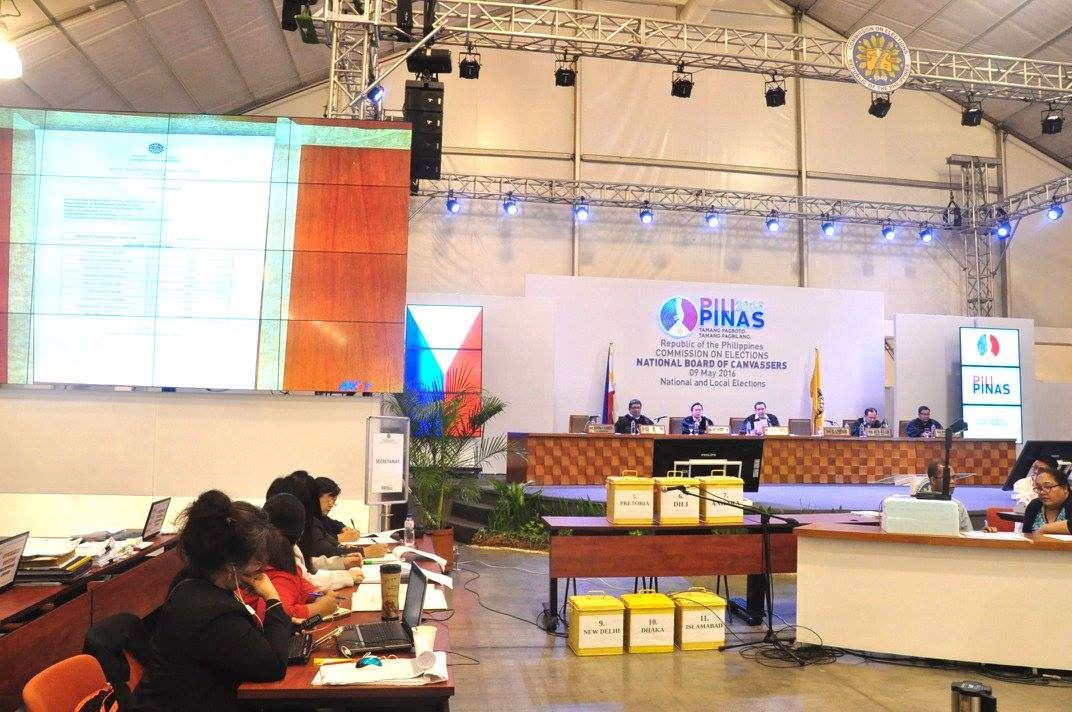SUMMARY
This is AI generated summarization, which may have errors. For context, always refer to the full article.

As the canvassing of votes for the 2016 senatorial and party-list elections at the Philippine International Convention Center (PICC) entered its 3rd day on Thursday, May 12, reporters and poll observers sought one particular document: a partial, official canvass of votes.
An observer for a party-list group even formalized the request for such running tally before the Comelec on the canvassing floor.
This would help them keep track of the votes garnered by candidates so far, based on the Certificates of Canvass (COCs) received by the Commission on Elections (Comelec), sitting as the National Board of Canvassers.
COCs started arriving at the PICC a day after the polls: 41 on May 10, then 27 on May 11, and some more on Thursday. Observers and the media were allowed to purchase copies of the COCs after they were audited and canvassed. COCs cost P2 per page.
But when the 3rd day of canvassing ended at around 8:30 pm, there was still no partial, official count.
This was not the case in the 2013 polls, when the Comelec issued canvass reports from time to time, to update all observers on the number of COCs and votes canvassed so far for the Senate and party-list elections.
The COCs contain all election returns (ER) electronically transmitted by all vote-counting machines (VCM) through a ladderized route: from the VCMs to the city/municipal canvassing server to the provincial server and finally to the national canvassing server. (READ: How does the PH automated election system work?)
This means that 100% of ERs in a province, highly-urbanized city or overseas posts must be transmitted and received before the Comelec starts officially canvassing the votes from the said area.
It is different from a 2nd transmission route, where the ERs are directly transmitted to the Comelec transparency server, serving as the unofficial quick count. As of this posting, at least 95.87% of ERs nationwide and overseas have been transmitted.
Sought for comment, Comelec commissioner Christian Robert Lim said that problems in canvassing the votes in some areas – like in the province of Davao del Sur and in Rizal town in Laguna – were preventing them from releasing a partial count.
“Kung maglabas kami ng running tally, ang problema, ‘yung maling results, kasama ‘yan,” said Lim. (So if we release a running tally now, the problem would be, the wrong results would be included.)
“So our concern is, if we’ll do an automated [tally], we want to clean up all these issues [first],” he added, emphasizing that they want to release correct and accurate results.
Comelec spokesperson James Jimenez also told Rappler that a separate canvass report would come “when everything has been completed” after which, the 12 winning senators and the winning party-list groups are expected to be proclaimed.
Rappler learned from a poll official that they aim to conduct proclamations not later than May 19.
Until then, it will be a long wait for observers and reporters at the PICC. – Rappler.com
Add a comment
How does this make you feel?
There are no comments yet. Add your comment to start the conversation.